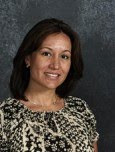We are continuously hearing from parents who are concerned that their children are not learning anything in our once-a-week class. I have been teaching for over 12 years PK-12. I have seen the time it takes the students to be bilingual, as well as the process, and the frustration they have to go through in the middle and high school when they bombarded with the heavy grammar.
When I was teaching 6th grade, I noticed that the students who were exposed at least once-a-week to a language class throughout the elementary years were able to understand their new language much easier. They were not feeling frustrated or defeated because they couldn't understand their teacher. They had a window already opened in their mind, ready to absorb the new concepts. Most of the students who dropped out of Spanish were never exposed to a second language during their elementary years. They switch to different languages thinking that it will be easier, and in the end they quit their language class after the 2nd year, barely covering the minimal college requirement for admission. They give up their bilingual aspirations.
We have to remember that it takes many years of repetition to learn a second language, the same repetition we see in the math classes. I believe math and second languages follow the same pattern and process. They build on from year to year, and they require a lot of practice and repetition. I understand this process as a teacher and as an English student myself. I have never stopped learning my second language. Celia






Children absorb so much at an early age and it gives them a wonderful lifelong advantage to know another language! This a wonderful!
ReplyDeleteMost learners begin their acquisition process with a "silent period", in which they speak very little if at all. For some this is a period of language shock, in which the learner actively rejects the incomprehensible input of the new language. However, research has shown that many "silent" learners are engaging in private speech (sometimes called "self-talk"). While appearing silent, they are rehearsing important survival phrases and lexical chunks.
ReplyDeleteRemember that learning a second language takes time. Even if you cannot see it, children are learning.
As a bilingual preschool and elementary teacher ,I have found many important reasons to expose children to another language at an early age. It is true, that people of all ages can learn a second language; however, it has been shown thru studies and research that the optimal age for children to learn and acquire a new language is between 2 and 7 years old. It gives me a great satisfaction when my after school students are able to articulate some sentences/phrases in Spanish and share facts about my country and culture .
ReplyDeleteIn a previous job experience, I have had students since they were 2 years old and now they are almost 6 ,we can engage a conversation in Spanish; they can fully understand and communicate in my own language, they even speak speak with my Hispanic accent!!